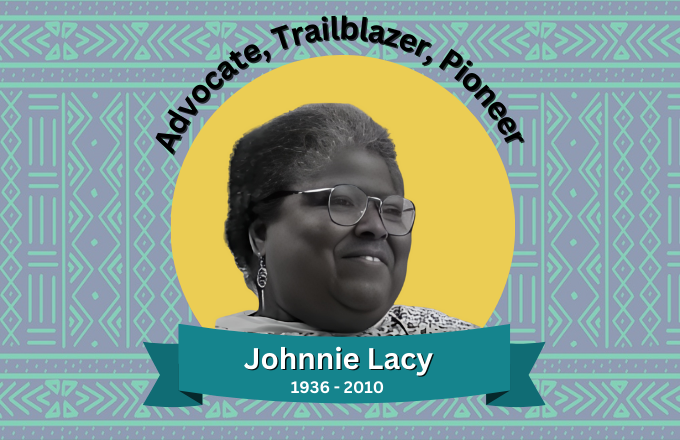
Breaking barriers: the legacy of Johnnie Lacy
By the SEIU Local 1021 Workers with Disabilities Committee
Johnnie Lacy was a trailblazer in the disability rights movement, and her contributions have had a lasting impact on the lives of people with disabilities. Her advocacy efforts helped raise awareness about the challenges faced by people with disabilities and paved the way for greater inclusion and accessibility. Her legacy inspires future generations of activists and advocates to fight for a more just and equitable society for all.
Born in 1937 in Texas, Lacy was diagnosed with polio at two years old; it left her paralyzed. Despite her physical limitations, Lacy became a leading advocate for the rights of people with disabilities, particularly in the Black community.
In the 1970s, Lacy co-founded the Center for Independent Living (CIL) in Berkeley, California, which was one of the country’s first organizations to empower people with disabilities to lead independent lives. The CIL provided housing assistance, transportation, and advocacy services to help people with disabilities overcome the barriers they faced.
Lacy also worked with the Community Resources for Independent Living (CRIL), an organization that provided similar services to those offered by the CIL. The organization was dedicated to helping people with disabilities thrive and achieve independence and self-sufficiency.
Throughout her career, Lacy was a strong voice for the rights of people with disabilities. She spoke out against the systemic barriers that prevented people with disabilities from accessing essential services and from participating in mainstream society. Her advocacy efforts helped to raise awareness about the challenges faced by people with disabilities and to pave the way for the passage of the Americans with Disabilities Act (ADA) in 1990.
Lacy’s personal experience as a person with a disability and her unwavering commitment to social justice were integral to her activism. Despite the limitations imposed by her paralysis, she lived an active, fulfilling life and dedicated herself to advocating for others who faced similar challenges.

